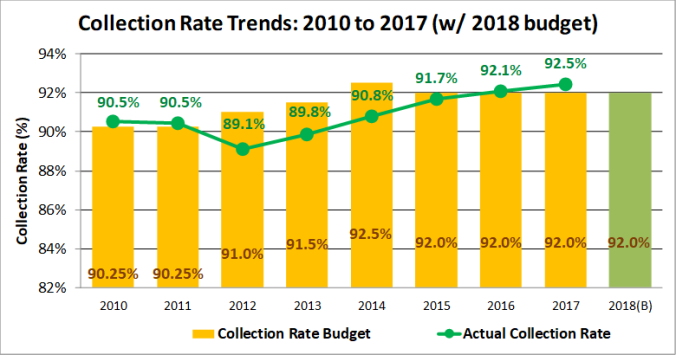BWC celebrates record giving
By Erik Alsgaard
UMConnection Staff
Another year, another record.
For the second year in a row, United Methodists throughout the Baltimore-Washington Conference showed their generosity and stewardship by contributing a record percentage of apportionment payments. According to Paul Eichelberger, BWC’s treasurer, churches contributed 92.45 percent of apportionments in 2017, breaking the record of 92.1 percent, set in 2016.

The 92.45 percent beat the 2017 apportionment goal, which was set at 92 percent by CFA and the 2016 Annual Conference Session. In terms of actual dollars, Eichelberger said it means the BWC received $69,686 more than what was budgeted.
“It is by far the best that we show on record,” Eichelberger said, “and the records go back at least 25 years.”
The numbers show $15,455,352 as the budget collectable in 2017. Churches contributed $14,288,609.
The 92.45 collection rate, when compared to just a few years ago when it was in the high 80’s, means an almost $450,000 difference in actual dollars, Eichelberger said. That amount, he said, is enough to fund the conference’s Leadership Development program for one year.
“That’s what fundamentally has been done by the increased participation,” Eichelberger said. “We’ve been able to fund a significant ministry department simply by that increase in the collection rate without asking for an additional dollar from the average church.”
Eichelberger and Pier McPayten, BWC’s Controller, were quick to praise the 635 churches and their leadership for seeing the importance of apportionments as a way to share mission and ministry around the corner and around the world. They also credited the Conference Council on Finance and Administration for working on containing costs through the BWC, especially in a time of increasing prices in many key areas.
Inside the numbers, Eichelberger said that the picture is even stronger. That’s because when the Annual Conference budget is set, it is projecting up to 2 years in the future and assumes that a certain number of churches will be contributing. Over the course of those years, a handful of churches close, reducing the
However, when looking at only the churches that were open at the end of the calendar year 2017, the apportionment receipts came in a 92.8 percent, Eichelberger said.
Further breaking down of the numbers, Eichelberger said that 516 churches contributed 100 percent of
“For me, the bigger point this year is that we’ve been very focused, and districts have had good relationships with the churches,” Eichelberger said. “We’ve been working the system where
Those goals, he added, may not mean reaching 100 percent in the immediate future, but they do signify reaching a higher percentage than the year before.
Eichelberger noted that the BWC’s apportionment budget has stayed flat for the past six years. That, he said, is another reason for a higher percentage as the capacity for giving in some churches has increased in that time.
“I think that the churches themselves are paying more consistently,” said
Eichelberger expects 2018 to be another strong year in stewardship and giving for the BWC.
“The strength of the connection is being shown through the participation of more churches across all districts,” he said. “Congregations are wanting to set good goals for themselves, that challenge them and show continuous improvement, even if they’re not at 100 percent.”
